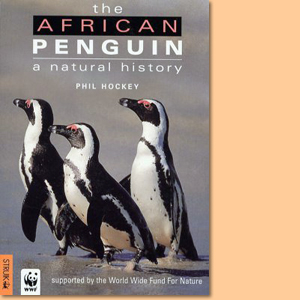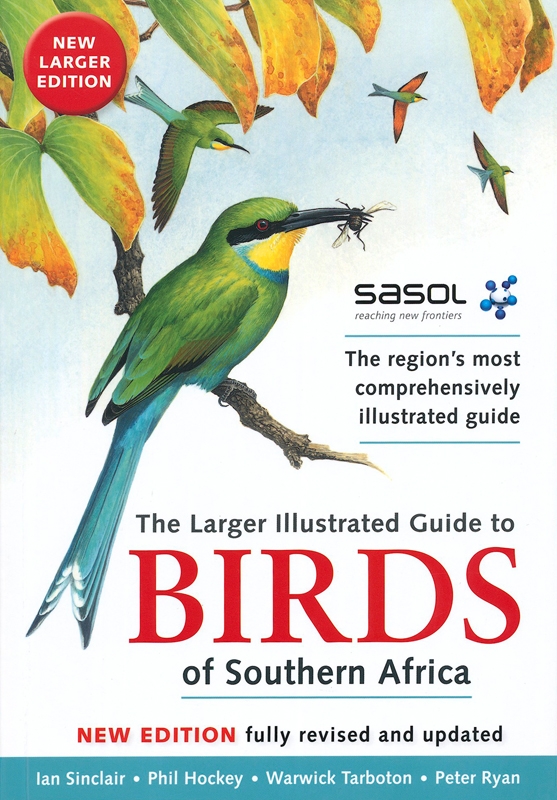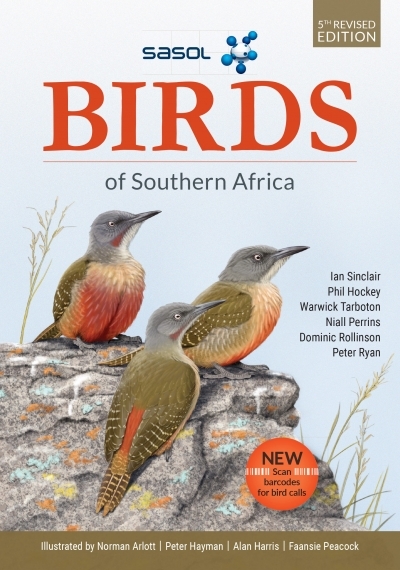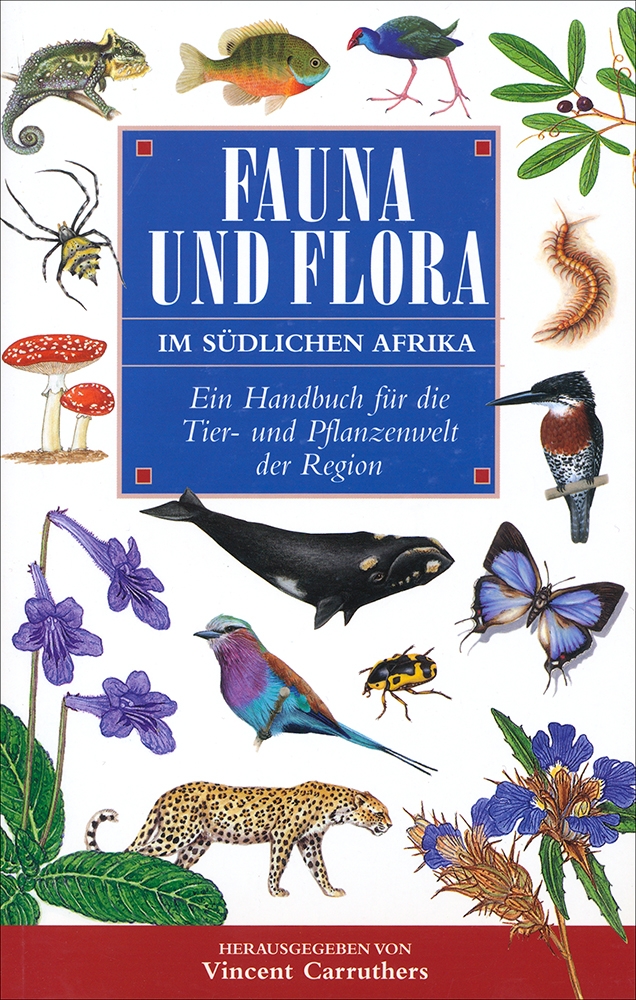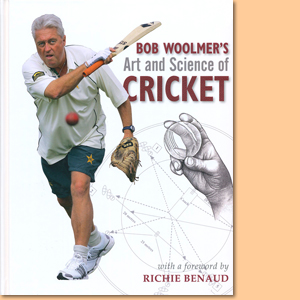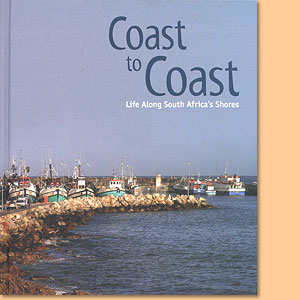The African Penguin: A Natural History, by Phil Hockey
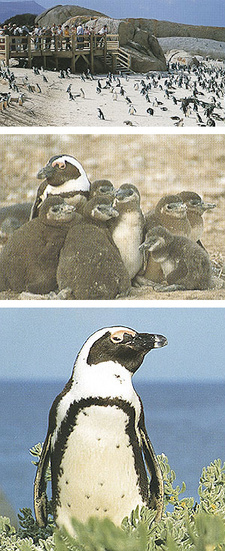
The African Penguin: A Natural History, by Phil Hockey. ISBN 1868725235 / ISBN 1-86872-523-5 7 ISBN 9781868725236 / ISBN 978-1-86872-523-6
The African Penguin, the only penguin species to breed in Africa, is confined largely to the cold waters of the extreme southwest, breeding on scattered islands along the South African and southern Namibian coasts. Its natural history is here described by Phil Hockey.
Its distribution coincides roughly with the Benguela Current, a cool, northward-flowing, nutrient-rich body of water that is forced to the surface by strong winds, especially in summer - a process called upwelling. A large and isolated penguin population in Algoa Bay, on the Eastern Cape coast, also occurs in the vicinity of a localized, nutrient-rich upwelling system. The distribution of the birds is further determined by the availability of offshore islands as breeding sites. Five million years ago, the story of the penguin in Africa was very different. Terrestrial habitats along the Benguela coast were not as they are now. The land was much more tropical and where short scrub and small mammals now predominate, a warm tropical woodland was home back then to bears, sabre-toothed cats and the forerunners of modern-day giraffes and elephants. All this changed when the southwestern coast began to develop its Mediterranean climate. Despite the tropical fauna on land, the marine environment of southern Africa at the time was closer to that of the modern sub-Antarctic, and included birds of the deep south, such as diving petrels, which no longer occur as far north as Africa. Among the bird fossils that have been discovered in southern Africa are those of no fewer than four species of penguin, all of which are thought to belong to the same genus Spheniscus as the modern African Penguin. They all date from the late Miocene period, some five million years ago. The smallest was slightly smaller than the African Penguin; the largest was more than twice its size. When and why these birds became extinct is not known. Today, the islands of the sub-Antarctic are home to several species of penguin. Even though some of the islands are not far, in global terms, from the African mainland - the Prince Edward Islands are less than 2000 km away - none of these birds is closely related to the African Penguin. Its nearest relatives are found almost 9000 km away, along the coast of southern South America. The two species that occur there, the Humboldt Penguin S. humboldti and the Magellanic Penguin S. magellanicus are very similar in size, appearance and behaviour to the African Penguin. Its only other close relative is the world's most tropical penguin, the Galapagos Penguin S. mendiculus, which is found only on the Galapagos Islands. The evolution of penguins is not well understood because the fossil record is very incomplete. The birds are confined to the southern hemisphere, but where and when they first evolved is a mystery. What is certain, however, is that their common ancestor was not a flightless, but a flying, bird. The earliest 'proto-penguin' bones were discovered in New Zealand and are approximately 55 million years old. This is a much older bird than the four fossil penguin species found in southern Africa. Penguins probably appeared on Earth after the massive extinction of marine reptiles at the end of the Cretaceous. […]
This is an excerpt from the guide: The African Penguin: A Natural History, by Phil Hockey.
Title: The African Penguin
Subtitle: A Natural History
Author: Phil Hockey
Struik Publishers
Cape Town, South Africa 2001
ISBN 1868725235 / ISBN 1-86872-523-5
ISBN 9781868725236 / ISBN 978-1-86872-523-6
Softcover, 15x21 cm, 72 pages, many colour photos
Hockey, Phil im Namibiana-Buchangebot
The African Penguin: A Natural History
The African Penguins' origins, behaviour, biology, life, food, feeding, breeding and development.
Sasol Larger Illustrated Guide to Birds of Southern Africa
This new larger illustrated guide is based on the recently updated fourth edition of the standard-format Sasol Birds of Southern Africa.
Sasol Birds of Southern Africa
Sasol Birds of Southern Africa remains the region’s most comprehensively illustrated and trusted field guide.
Weitere Buchempfehlungen
Fauna und Flora im südlichen Afrika
Fauna und Flora im südlichen Afrika: Ein sehr beliebtes Handbuch für die Tier- und Pflanzenwelt der Region.
Bob Woolmer's Art & Science of Cricket
Bob Woolmer's Art & Science of Cricket does not simply supply technical 'recipes' for batting, bowling and fielding. It aims at developing 'all-rounders' in this unique sport.
Coast to Coast - Life along South Africa’s Shores
A pictorial journey covering the whole coastline of South Africa

